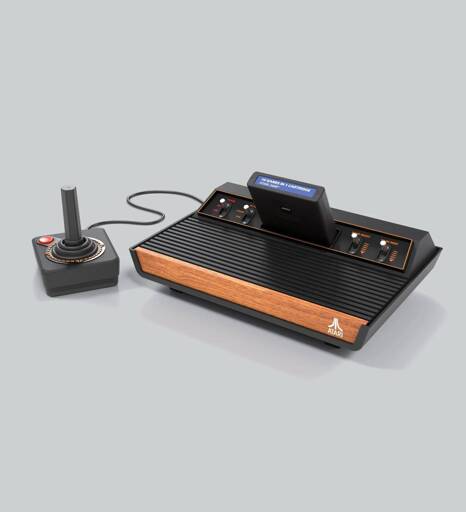McDonald’s AI Hiring Bot Exposed Millions of Applicants’ Data to Hackers Who Tried the Password ‘123456’
-
Bash is kill?: (
it seems down at the moment
I don't have any more info
-
If the 90s taught me anything, it's that hacking is done exclusively on monochrome green monitors, with dos. Except once they hack in, the monitor is full color, and somehow has access to every video camera on the planet. With the ability to enhsnce resolution seemingly to magical levels where you can see a clear reflection in someones pupil.
ENHANCE!!!
Rotate 75 degree on the vertical.
-
ETA: Mine, too.
(ETA in this context means "Entering Text As:")
What an
EnternainingEntertaining Twist of an Acronym. -
"hackers"....
Love, secret, sex, and god.
-
Love, secret, sex, and god.
The greatest hackers of all time: Crash Override and Acid Burn.
-
The greatest hackers of all time: Crash Override and Acid Burn.
What was it? "Mess with the best, die like the rest" lol. Classic. Also Penn Jilette from Penn & Teller is in that.
-
Paywall removed: https://archive.ph/sn2Ud
Paradox.ai’s chief legal officer, Stephanie King, told WIRED in an interview. “We own this.”
I didn't know Stephen King changed gender and is working for AI company.
-
What was it? "Mess with the best, die like the rest" lol. Classic. Also Penn Jilette from Penn & Teller is in that.
Yup, that was it.
Not a good movie and the tech was atrocious but I love it anyway.
-
Yup, that was it.
Not a good movie and the tech was atrocious but I love it anyway.
Atrocious!?

“Yo. Check this out guys, this is insanely great, it's got a 28.8 BPS modem!”
-
Paywall removed: https://archive.ph/sn2Ud
Why do you even need a hiring bot for McDonalds? Maybe for managers but a McJob is a McJob.
-
Wasnt it a security researcher and not a hacker?
The difference in terminology is simple..
A legit paycheck.
-
I hate any company that uses or builds AI to screen out hires so, so much. Tagging metadata is OK, but filtering is just evil (am/have been a hiring manager).
The company also added that it’s instituting a bug bounty program to better catch security vulnerabilities in the future. “We do not take this matter lightly, even though it was resolved swiftly and effectively,”
I also hate it more that I can't hate them for doing the right thing.
They only did the right thing after getting caught openly doing the wrong thing, so I'd say I'd still be pissed.
They should have never put the system in place with such a simple vulnerability (which to me) says they take such a laxodasical approach to security that I wouldn't trust them even now.
-
Yup, that was it.
Not a good movie and the tech was atrocious but I love it anyway.
Not a good movie?!? Sir/madam, this is blasphemous.
-
Atrocious!?

“Yo. Check this out guys, this is insanely great, it's got a 28.8 BPS modem!”
Hack the planet, or in this case, hack the Big Mac!
-
Why do you even need a hiring bot for McDonalds? Maybe for managers but a McJob is a McJob.
I help folks with disabilities get jobs, so I'm familiar. I generally avoid fast food for my people, because it's degrading and no one really wants a McJob. That being said, the bot actually makes it easier to apply, and they immediately schedule an interview...because they don't care what your resume says and they just need warm bodies to throw at angry customers. Again, I avoid it for my folks wherever possible.
-
Bash is kill?: (
Years, sadly.
-
Paywall removed: https://archive.ph/sn2Ud
In the future, actual hacking will just involve social engineering corporate ai systems ( aka prompt hijacking )
-
Hack the planet, or in this case, hack the Big Mac!
"You could sit at home, and do like absolutely nothing, and your name goes through like 17 computers a day. 1984? Yeah right, man. That's a typo."
lol, 17
-
Paywall removed: https://archive.ph/sn2Ud
"Spaceballs: the HR Robot"
Seriously though, who the fuck uses 123456 as the password for anything? The morons pulling shit like this are making bank while the people brought onboard by McDonalds make scratch by comparison, and would be crucified for fucking up even a fraction as much as this. Millions, with six zeroes, millions of applicants' data stolen from an account with the kind of password that a kid would use on their home computer. Fuck, this makes me so mad, the sheer incompetence.
-
I hate any company that uses or builds AI to screen out hires so, so much. Tagging metadata is OK, but filtering is just evil (am/have been a hiring manager).
The company also added that it’s instituting a bug bounty program to better catch security vulnerabilities in the future. “We do not take this matter lightly, even though it was resolved swiftly and effectively,”
I also hate it more that I can't hate them for doing the right thing.
Speak for yourself, I'm holding out hope that the universe is actually a little fair, and that the dolt responsible to creating that password, and subsequently fucking over millions of people has their testicles ruptured. Who are these idiots?







